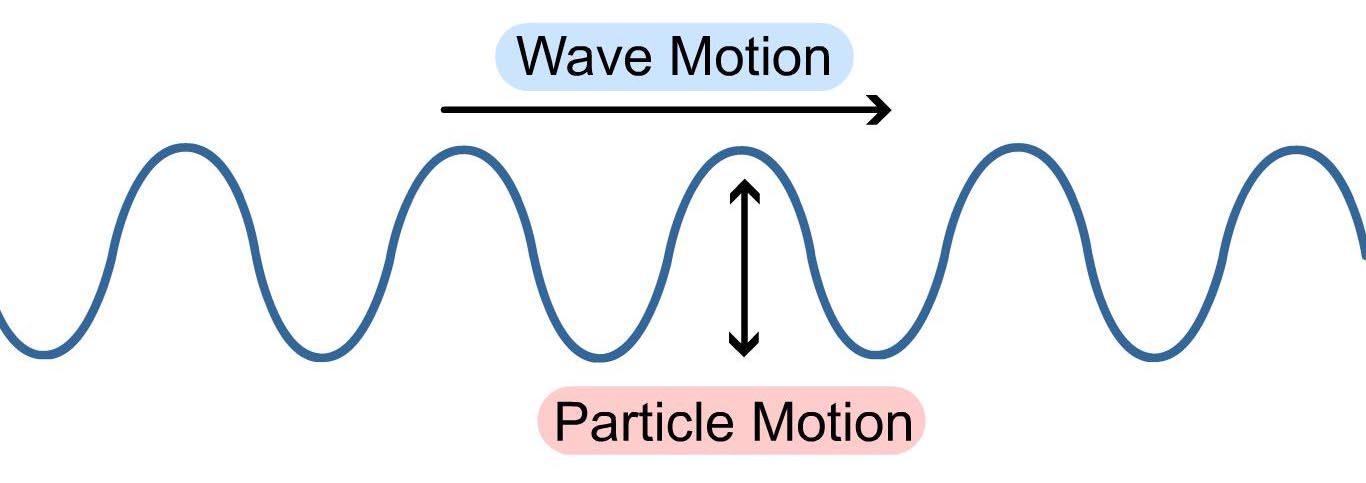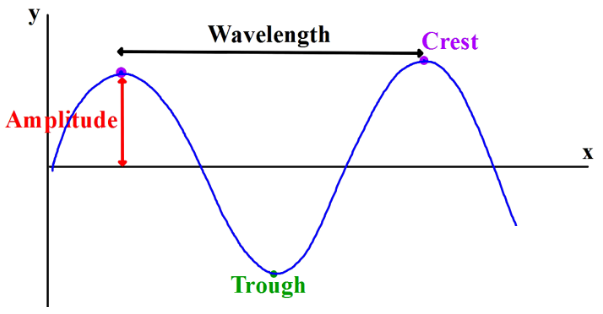Wave motion is the propagation of the disturbances, which is the deviation from the resting state or the equilibrium state, from one place to another place in the organized and the regular way. The surface waves on the water are the most familiar ones. Both the waves of the light and sound travel in the form of waves like disturbances and the movement of all the subatomic particles, also exhibit the wave-like properties.

Description
The simplest types of wave motion are the vibrations of the elastic media such as crystalline solids, air, or stretched strings. For example, if the surface of the metal block experiences the sharp blow, then due to the deformation of the surface material, the metal is compressed in the vicinity of its surface. Resultantly, the disturbance is transmitted to the underlying layers. Later on, the surface is relaxed back to its initial configuration, and the compression is propagated into the body of the material. The stiffness of the material greatly controls the speed of the propagation. This type of steady transmission to the of the localized disturbances through the elastic medium is much common to the various forms of the wave motion.
Transverse Wave Motion
In this type of wave motion, the particles of the medium vibrate in the perpendicular direction to the direction of the wave’s propagation. The region of the maximum displacement in the upward direction is known as the crest region, and the region of maximum displacement towards the downward direction is known as the trough. The transverse wave motion only occurs through the medium, which has the shape conservation or the rigidity modulus.

Longitudinal Wave Motion
The vibrations of the particles of the medium around the equilibrium position, in the parallel direction to the direction of the wave’s propagation, is known as the longitudinal wave motion. A medium is required by the longitudinal waves only elasticity of the volume for its propagation. In this kind of wave motion, the waves are traveling through the medium in rarefaction and compression. The region that has low pressure is known as the rarefaction and the region that has high pressure is known as the compression.
Characteristics of Wave Motion
In the wave motion, the traveling of the disturbances is through the medium, due to the repeated periodic oscillations. There is a transfer of momentum and energy from one point to the other but there is no actual transfer of the medium’s particles. The velocity of the wave motion remains constant for the given medium and the velocity with which the wave is traveling is different from the particle’s velocity, with which they are vibrating about their equilibrium position.